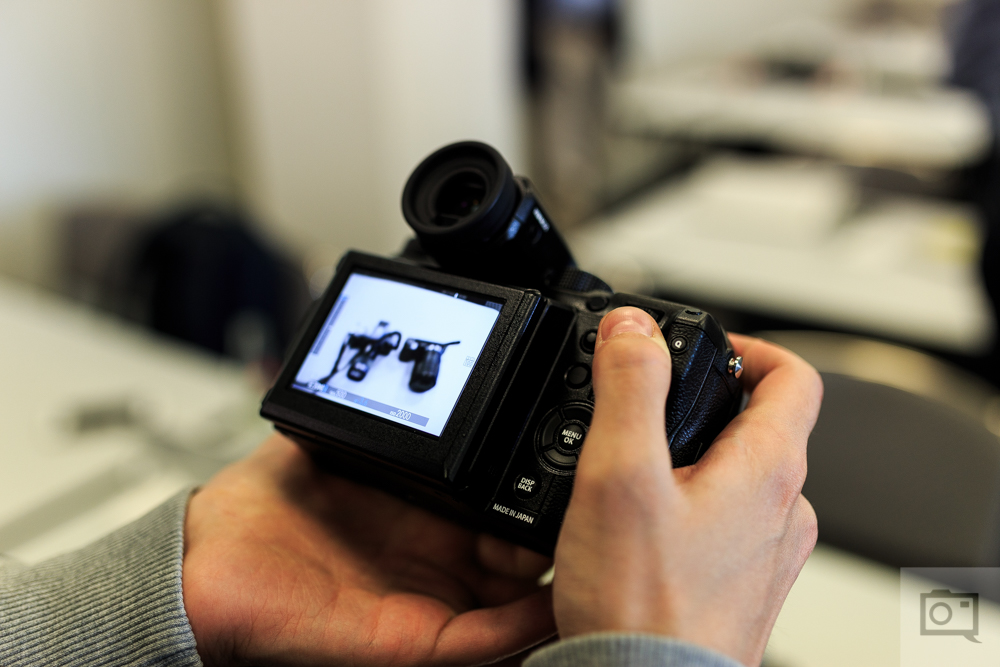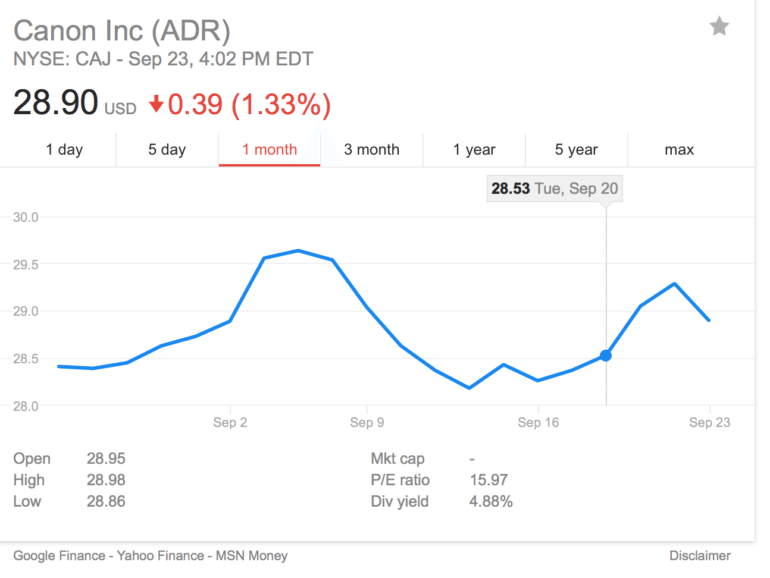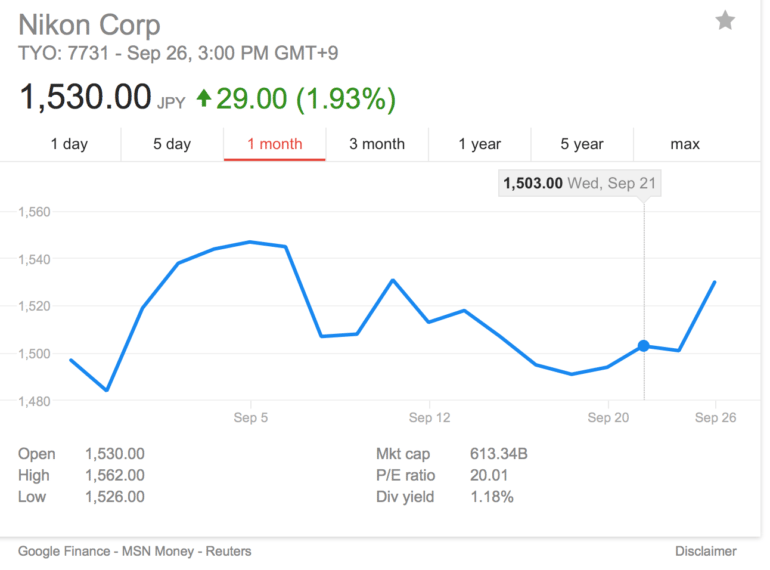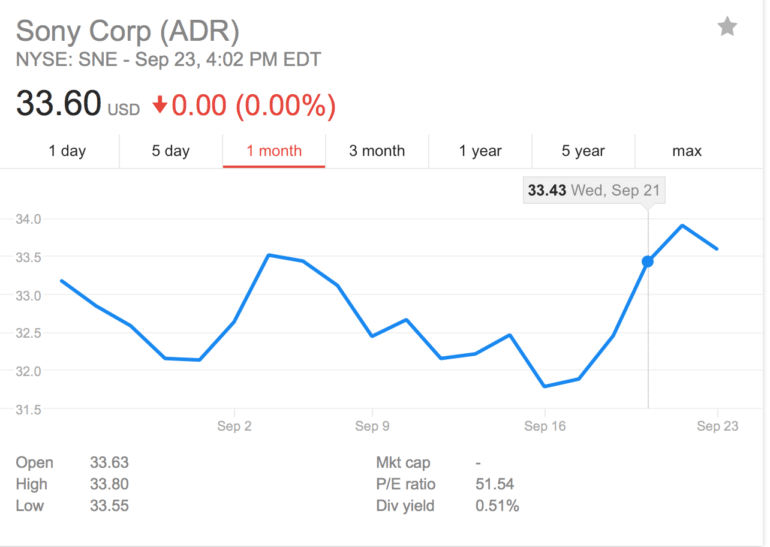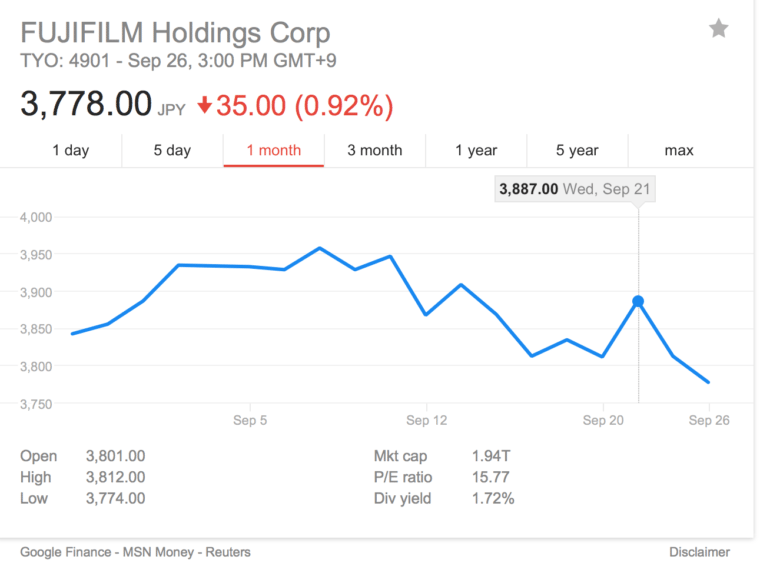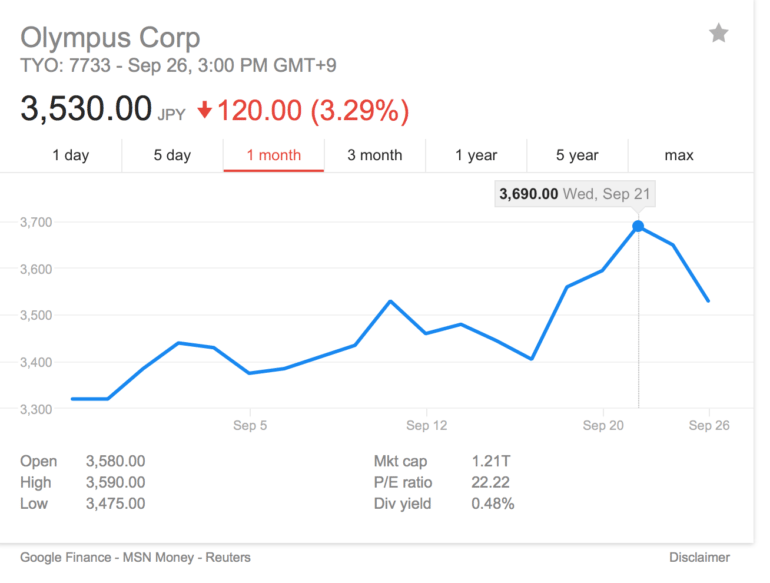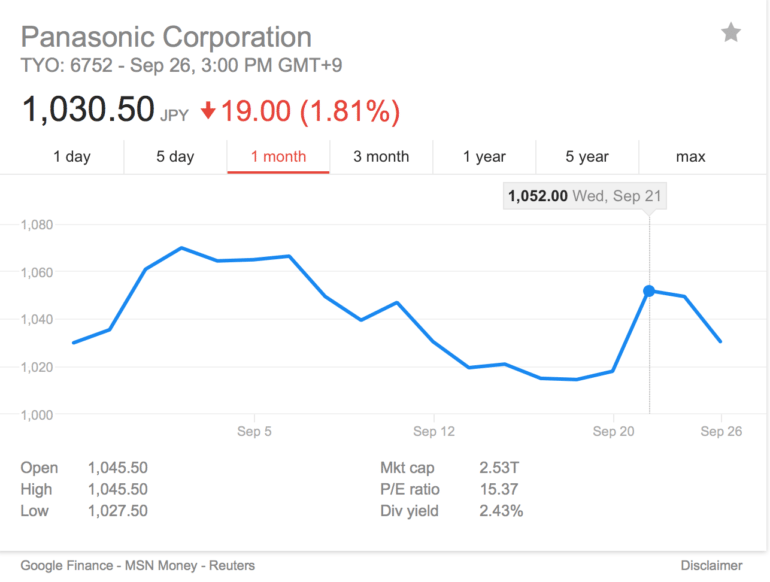Last Updated on 09/26/2016 by Chris Gampat
When the Apple iPhone 7 was announced, it was clear that Apple was going after the DSLR and mirrorless cameras in an intention to end their industry. The new camera in the Apple iPhone 7 Plus is said to use a telephoto (though it’s actually a normal) lens and a wide angle to create an image with a blurred background. Apple states that this simulates the same effect of a larger sensor.
Because the world generally doesn’t know any better or understand the importance of ergonomics, lens options, the use of effective off-camera lighting, etc. the headlines of many a tech publication were discussing the death of traditional cameras. As a result, stocks went down. But after Photokina, things seemed to go back up–until we all realized that everyone was making development announcements due to recent earthquakes and natural disasters.
So here’s how the camera companies are doing after Photokina.
Canon
Canon’s stock had a massive drop after the announcement of the iPhone 7, but during Photokina the stock seemed to go up overall. The 5D Mk IV and the EOS M5 were announced before the show though; so we’re not quite sure that the two are correlated.
Nikon
Nikon’s stock went up and then down–where it continued to go down. At Photokina, it started to show a bit more of a upwards trend. What happened? Life logging cameras are still on the rise, and a full 360 camera makes a lot of sense to the company. Their stock keeps going up.
Sony
I’m honestly not sure why Sony’s stock took a tumble to begin with, but during Photokina 2016 the stock went up a lot. Tuesday, the company let a number of key journalists play with their new Sony a99 II. It made people excited despite the fact that so many people are already stuck in the company’s mirrorless offerings.
Fujifilm
Arguably, the star of the show was Fujifilm with the Fujifilm GFX 50s medium format camera. Wednesday is the day that lots of journalists got a chance to play with the new camera. First impressions were published that day and got people even more excited.
Olympus
Monday night, Olympus unveiled their biggest news that the press wasn’t briefed on previously. The OMD EM1 Mk II proved itself to be something very oriented to the pro market and Olympus has shown that they’re becoming even more serious not only with cameras, but with pro support and lenses.
Panasonic
For sure, one of our most popular stories around Photokina 2016 was about the announcement of the Panasonic GH5. When the camera gets released, it’s going to feature a lot of new additions that really push the industry’s video category.
We can probably expect the stocks to go down a bit until journalists get the cameras in their hands again or until Photo Plus 2016 in October–the last big photo show for the year before holiday season.
So why does any of this matter? It’s a key point where the industry needs to realize that they have to start marketing the idea of a camera system and not just a camera. Apple doesn’t really push the idea of their ecosystem despite having the iPad, iPhone, iMac, Macbooks, Apple TV, Apple Watch, etc. The most popular devices are the mobile options; but it makes a lot of sense to say that Apple TV is nowhere as popular as anything else that the company offers. However, the company makes healthy profits off of their phones.
Camera companies, on the other hand, don’t push lenses or flashes anywhere as hard enough as they should. Even at Photokina, I spoke with a journalist whose problems were easily solved with a new lens when what he wanted for taking product photos was a new camera. When he didn’t believe me, he went to another photo speciality journalist that said the same things I did.
Obviously this begins to show there is some sort of disconnect with the general public and understanding lenses–and maybe it’s time that camera manufacturers starting pushing this instead, especially considering that one or two companies are making all the sensors.


